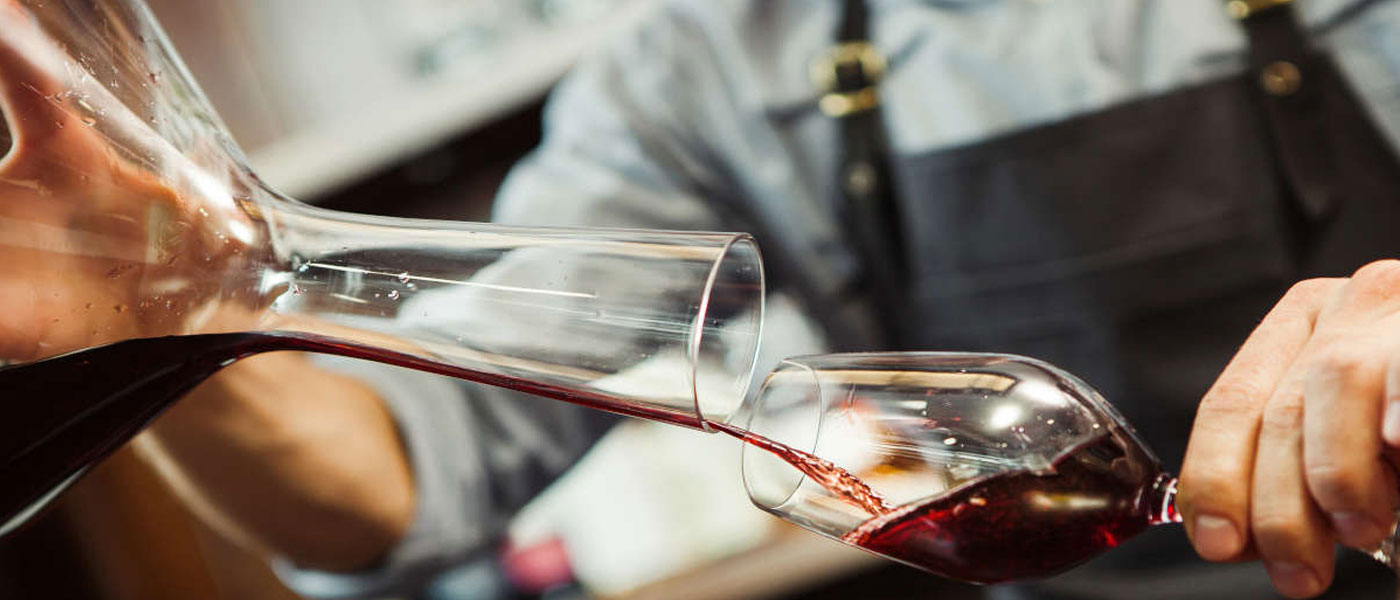What is Decanting? and its benefits

Introduction
Pouring wine into another container without mixing the sediment at the bottom is known as decanting. At Rico wine Park, this process is typically done into a glass bottle with a simple pour spout. Common types of decanters include the swan, cornett, duck, and standard decanters, available in various sizes. Decanting wine can enhance its flavour, transparency, and drinking pleasure, earning it respect in both the culinary and scientific communities.
How to Decant Wine?
Since decanting wine requires a delicate approach and a bit of patience let’s see how it is done meticulously. Rico wine park and vineyard, fits the bill.
If your wine bottle has been stored on its side, remove it from its position and let it stand upright for the whole day before you start the decanting process. This step allows the sediment to settle at the bottom of the bottle.
Unscrew the bottle of wine using a corkscrew to open.
Place the bottle’s neck towards the decanter, making sure the bottle’s base is tilted at an angle less than 45 degrees to prevent the wine from spilling (which could agitate the sediment).
Slowly and carefully pour the wine into the decanter, keeping an eye out for any sediment that approaches the bottle’s neck (a light or candle can help you see it).
Should any sediment come close to the bottle’s neck, flip the bottle over and proceed with the process.
Complete the pouring, leaving about half an ounce of wine in the bottle, with the sediment settling at the top.
Decanting wine can be done up to four hours before you’re ready to drink it. There’s a low risk of decanting too much wine, but it’s best to either consume or seal the wine within 18 hours.
Decanter care
– Cleaning the decanter is easy; follow these steps:Use a cloth or just a cloth to clean the outside of the decanter.
Clean by hand.
Avoid harsh cleaning products from the home, and make sure to rinse with water that’s running.
It’s a good idea to let it air dry standing up.
Keep it in a cabinet that’s not shared with dishes.
What are the benefits of decanting wine?
Lorem ipsum dolor sit amet, consectetur adipiscing elit. Ut elit tellus, luctus nec
Decanting has three main benefits:Decanting is mainly employed to divide the liquid from the particles that settle at the bottle’s bottom. It’s the initial step in removing the sediment from wine, particularly from red wines that are older or vintage ports, which tend to have more sediment, and white wines that are younger, which usually have less. Sediment isn’t dangerous, but it does have an off-putting taste.
Decanting improves the taste of wine by allowing it to aerate. Aeration is the method of adding oxygen to a liquid, often referred to as letting the wine “breathe.” This process softens the tannins and releases compounds that have formed without oxygen. Decanting wine opens up the flavours and scents that were locked away during bottling.
Decanting can preserve wine if the cork breaks. Sometimes, a cork may shatter, scattering pieces of cork debris into the wine. As you pour into a new container, the cork tends to collect at the bottle’s neck, similar to sediment. If the cork falls apart, it’s a good idea to use a strainer while pouring to catch any smaller pieces.
ullamcorper mattis, pulvinar dapibus leo.
Conclusion
Decanting involves moving liquid, like wine, from one vessel to another, usually to separate any particles and let the liquid have some air. Benefits include improved taste and aroma for wine, removal of impurities, and an enhanced drinking experience. For spirits, decanting adds aesthetic value and facilitates serving. Overall, decanting elevates the quality and enjoyment of beverages through better flavour, clarity, and presentation. If you are looking for high quality wines, your search ends here. Well-known brand, serving a variety of superior quality wine, Rico wine park and vineyards, stands testimony to time.

Comments
Post a Comment